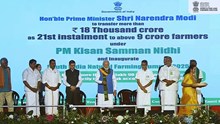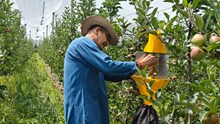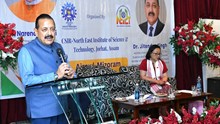
The surge in pulse imports in Financial Year 23-24 highlights India's urgent need for self-reliance in pulses and oilseeds. The government's decisive response has come through the Union Budget 2025-26, which has paved the way for a six-year Mission for Atmanirbharta in Pulses, with a special focus on tur (pigeonpea), urad (black gram), and masoor (red lentil). Backed by an investment of Rs 1,000 crore, this initiative is set to drive the introduction of hybrid technologies, short-duration varieties, and a more efficient cooperative framework supporting farmers through Minimum Support Price (MSP).
While challenges remain, the industry with renewed confidence dares now to looking beyond mere self-sufficiency toward positioning India as a global pulses exporter.
The 2025 Budget’s focus on boosting domestic pulses production comes in response to rising imports, which peaked at 4.8 million tonnes in Financial Year 24, the highest in six years. The Budget has introduced key measures such as the pre-registration of farmers under NAFED and NCCF for tur, urad, and masoor to ensure stable procurement. Furthermore, 150 model pulses villages and seed distribution hubs are being established to promote high-yielding, climate-resilient varieties, aiming to enhance domestic production.
As Indian agriculture embraces its transformation into Viksit Krishi for Viksit Bharat, World Pulses Day provides an opportune moment to reflect on the country’s unique positioning in the global agricultural landscape.
Recent breakthroughs in pulse breeding have significantly improved yield potential. Traditional chana varieties take 140-150 days to mature with 1-2 irrigations, whereas new short-duration varieties can be harvested in just 100-120 days with minimal irrigation. Farmers can now sow from late September to mid-October, leveraging the residual moisture from the kharif crop. The advances are even more remarkable in moong cultivation, where farmers can now take up to four crops annually.
Despite an upward trend in pulses production, India has struggled to meet domestic demand. Challenges such as the non-availability of short-duration varieties, changing consumer preferences, and declining consumption of cereals and pulses (down 5% in both rural and urban areas) hinder efforts for Atmanirbharta.
India remains the world's largest producer and consumer of pulses, yet it grapples with erratic weather patterns, outdated farming techniques, and inadequate infrastructure. The lack of modern agricultural technology and inefficient irrigation systems continues to affect productivity, exacerbating reliance on imports. However, India’s pulse-growing regions are not only crucial for domestic food security but also hold immense export potential. As global agricultural supply chains evolve, India’s role as a reliable producer is gaining recognition.
To bridge these gaps, India must modernize its production systems, promote climate-resilient crops, and stabilize domestic output. Key priorities include accelerating technological adoption, integrating modern biotech, and strengthening infrastructure. While government initiatives like Pradhan Mantri Krishi Yojana aim to improve productivity in low-yielding districts, a larger push is required to incorporate cutting-edge agri-biotech into Indian agriculture.
A key aspect of this transformation lies in biotechnology, particularly genetically modified (GM) seeds. Conventional seed improvement alone will not suffice, GM technology is vital to combating diseases, pests, and yield stagnation. Countries like Brazil and the United States have successfully leveraged biotech for agricultural advancement; India must follow suit to remain competitive. The government should take bold steps in approving and promoting GM seeds for pulses and oilseeds.
Additionally, while India’s agri-tech ecosystem is burgeoning with innovation, many startups struggle with regulatory bottlenecks and limited funding. The pace of policy implementation must accelerate to facilitate private sector participation in seed development, precision farming, and post-harvest solutions. Extending the Make in India and Atmanirbhar Bharat initiatives to agricultural innovation will further enhance India’s position as a leader in pulses and oilseeds.
Indian farmers need to be equipped with the right tools including high-quality seeds, access to advanced technology, stable pricing mechanisms, and government support.
While the government’s commitment to direct procurement through NAFED and NCCF is commendable, a more robust system of rural extension services is needed. Educating farmers on the benefits of new schemes and technologies is just as crucial as providing access to them.
The Self-Reliance in Pulses and Oilseeds Mission is a solid first step, but it must be reinforced by aggressive investments in research, widespread adoption of biotechnology, and policy reforms that encourage innovation. By prioritizing seed development, expanding the scope of agri-tech, and investing in R&D, India can transform its agricultural sector into a global powerhouse, not only for pulses and oilseeds but for the future of global food security.
While the 2025 Budget has laid the foundation, realizing its full potential will require bold policy decisions, particularly in regulatory changes that encourage public and private sector innovation & collaboration.
(Author- Kuldeep Tyagi, Deputy Director- Government Affairs, Federation of Seed Industry of India)
















